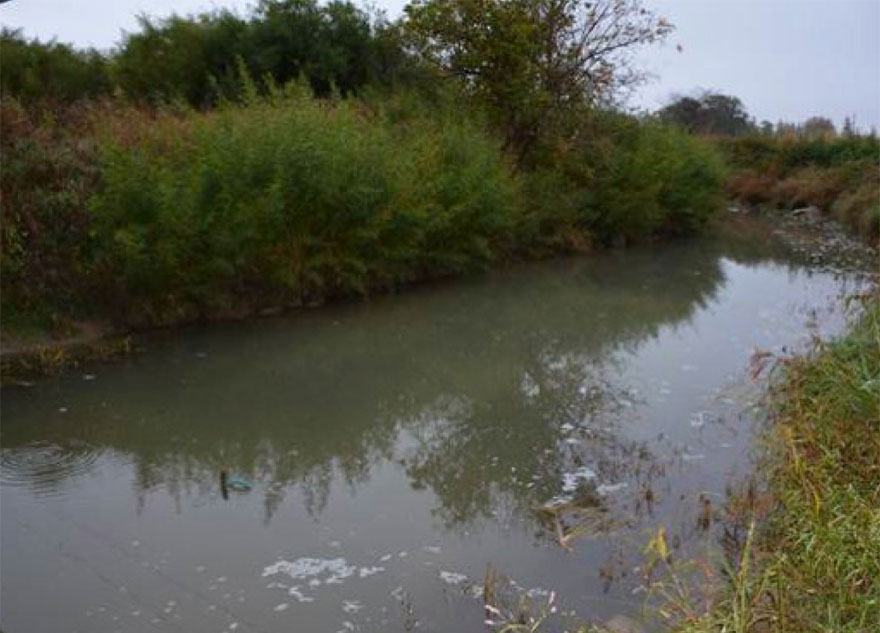
Researchers took samples from watersheds across Canada in their effort to understand the prevalence and sources of toxic E. coli bacteria in the environment.
(Photo credit: Lyne Sabourin, AAFC)
Agriculture and Agri-Food Canada (AAFC) research scientist Dr. Ed Topp and his team have seen a lot of Canada over the past few years—collecting and testing water samples from hundreds of watersheds and marine areas in six provinces across the country.
As part of the wide-ranging Food and Water Safety (FWS) project funded through the Government of Canada's Genomics Research and Development Initiative (GRDI), Dr. Topp's team is studying the incidence and tracking the source of the dangerous forms of E. coli bacteria in our environment—bacteria that can cause serious, even fatal illness. A total of 53 scientific experts as well as technical personnel from six federal departments are collaborating in the FWS project, aimed at exploring ways the relatively new science of genomics can contribute to enhancing the safety of Canada's food and water supply.
Filling a knowledge gap
In a sense, the work Dr. Topp and his team are doing is an application of the old business maxim that, 'if you can't measure it, you can't manage it.'
"Until now, we've never had a national perspective on where these verotoxigenic strains of E. coli are distributed in our environment," says Dr. Topp. "Once we understand more about where and how a bacteria like E. coli 0157:H7—the one that causes hamburger disease—or any of the half-dozen other toxic strains are most likely to enter the water, we can conduct meaningful risk assessments and consider ways to manage the risk."
Like the rest of the FWS project, doing the field work and lab work to assemble this national perspective has been a collaborative effort involving researchers from a number of federal departments—including Dr. Tom Edge from Environment Canada; Dr. Vic Gannon of the Public Health Agency of Canada; and Dr. Pascal Delaquis from AAFC.
New methods-new information
"The application of genomics-based technologies allows us to be so much more precise in identifying these bacteria," says Dr. Topp. "The differences between a toxic strain and a non-toxic strain of E. coli can be very subtle—there are even differences within strains. To have confidence in your decision about which is which, genome sequencing—so you can compare the DNA of the bacteria side-by-side—is the best method available."
That is why, as samples were collected, they were shared with yet another team in the FWS project, headed by Dr. Morag Graham at the Public Health Agency of Canada. "Whole genome sequencing of the verotoxigenic strains of E. coli led by Dr. Graham fills in another piece of the puzzle," says Dr. Topp. "We can see, for example, which genes are associated with their toxicity to humans and the genes associated with antibiotic resistance in these bacteria—something that is becoming a real concern."
Putting new knowledge to work
In the final few months of the FWS project, Dr. Topp and his team will be focused on the source tracking part of their research—looking for common factors between areas where a particular strain of verotoxigenic E. coli was identified and the surrounding environmental conditions.
"As each sample was collected, we recorded how the land in the area was being used—was there a large human population or a cattle or other livestock operation, for example," says Dr. Topp. "As part of our sample testing, we looked for any type of fecal contamination in the water. These bacteria are quite specific to their host so, for example, if we found significant markers of fecal bacteria from cattle where we found a strain of vertoxigenic E. coli, we would interpret that as cattle being the primary source of the E. coli contamination."
Enhancing public health and safety
Dr. Katarina Pintar, Manager of the Centre for Food-Borne, Environmental and Zoonotic Infectious Diseases at the Public Health Agency of Canada says the research led by Dr. Topp will have an impact.
"Source tracking E. coli in the environment in this way will help to inform broad surveillance initiatives such as FoodNet Canada, focused on trying to figure out where and why Canadians are getting sick," says Dr. Pintar. "It will also inform monitoring initiatives of local watersheds led by conservation authorities and municipalities. A greater understanding of the sources of a contaminant like E. coli can help inform more effective land use management practices to reduce downstream contamination, as well as more effective public health interventions at the local, provincial and federal level."